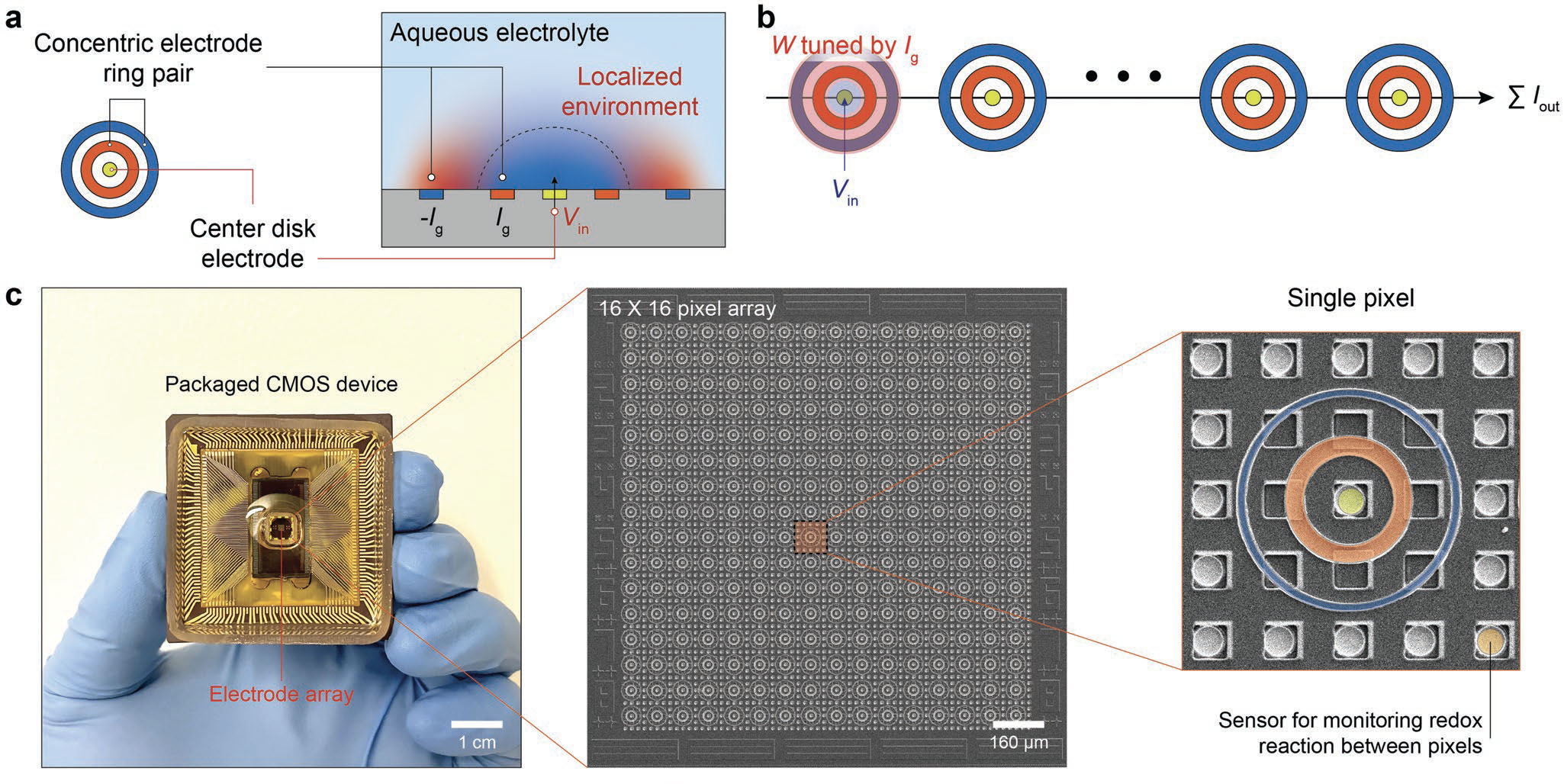| Sep 15, 2023 | |
Revolutionizing computing with ionic transistors |
|
| (Nanowerk Spotlight) For over fifty years, the relentless miniaturization of silicon transistors has upheld Moore’s Law, delivering exponential leaps in computing power. However, this development faces fundamental physical limits, with chip components bumping up against the boundaries of quantum mechanics. To continue advancing, researchers are investigating novel materials and paradigms inspired by the human brain’s astonishing efficiency. One particularly radical approach attempts to mimic biology by using ions rather than electrons for computation. | |
| Processing information with flows of charged atoms dissolved in aqueous solutions represents a complete reimagining of conventional electronics. While ions move much slower than electrons, they open up possibilities like encoding data in diverse ionic species and exploiting electrochemical phenomena. Most importantly, biological ionic signaling achieves incredible energy efficiency that far surpasses modern supercomputers on a per operation basis. If engineered ionic circuits can come anywhere close to matching their biological counterparts, it would enable new applications requiring ultra-low power consumption. | |
| However, the field of aqueous ionics has thus far focused on individual diodes and transistors, rather than complete integrated circuits. Now, in a major step forward, researchers at Harvard University have interconnected 256 new electrochemical ionic transistors into a fully functional 16x16 array circuit. This pioneering work, reported in Advanced Materials ("An Aqueous Analog MAC Machine"), provides a glimpse into the potential of ionic computing architectures to complement conventional electronics in specialized roles. | |
 |
|
| Ionic transistor array. a) Schematic illustration of our ionic transistor, consisting of a concentric electrode ring pair and a center disk electrode. b) Concept of analog MAC operation using a column (shown horizontally, given the space limitation) of ionic transistors. c) 16 × 16 = 256 electrochemical pixel array post-fabricated on a CMOS chip. This is the same hardware as in ref. [11], but here we newly create the ionic transistor function in each pixel, and perform analog MAC computing using the resulting ionic transistor array. (Reprinted with permission by Wiley-VCH Verlag) (click on image to enlarge) | |
| At the core of this achievement is a new ionic transistor design, consisting of a center disk electrode surrounded by concentric inner and outer ring electrodes. The researchers discovered that running opposite polarity currents through the two rings creates local increases in the concentrations of two charged molecule species, hydroquinone (HQ) and benzoquinone (Q), around the central disk. This local environment gates the electrochemical reaction rate at the disk electrode, enabling the ring current to modulate the disk’s output current for a given input voltage. | |
| To scale this up into a full circuit, the team fabricated an array of 256 ionic transistors on a standard CMOS chip. They then demonstrated the first ever physical computation on an ionic circuit by performing analog multiply-accumulate (MAC) operations. MAC involves multiplying an input value by a weight, and accumulating the result - this primitive underpins neural network-based machine learning algorithms. In the ionic circuit, the ring current sets the weight, the disk voltage provides the input data, and the disk current multiplication result is accumulated across multiple transistors sharing a common electrode. | |
| This technique could substantially improve the energy efficiency of MAC computation compared to a digital CMOS circuit, bringing us closer to the biological inspiration. While this demonstration was limited to a binary weight and input scheme, it showed excellent agreement with theoretical calculations, proving the concept. In the most ambitious test, the team performed matrix vector multiplication using MAC across all 16x16 transistors. | |
| The researchers highlight areas needing improvement, like the 26 millisecond transistor response time and lack of independent pathways for routing ionic signals. However, tailored CMOS design and electrochemical guiding structures could alleviate these. Fundamentally though, ionic mobility limits speed relative to electronics. The focus is therefore on new capabilities, like diverse ionic species enabling richer information encoding. | |
| Overall, this pioneering work suggests aqueous ionics could complement solid-state devices for specialized tasks like low-power bio-inspired computing. With further development, ionic circuits may yet match electronics for speed and scale. However, their unconventional features will likely open up novel applications not easily accessible to standard CMOS logic. This discovery ushers in a new era of experimentation in ionic computing architectures. | |
 By
Michael
Berger
– Michael is author of three books by the Royal Society of Chemistry:
Nano-Society: Pushing the Boundaries of Technology,
Nanotechnology: The Future is Tiny, and
Nanoengineering: The Skills and Tools Making Technology Invisible
Copyright ©
Nanowerk LLC
By
Michael
Berger
– Michael is author of three books by the Royal Society of Chemistry:
Nano-Society: Pushing the Boundaries of Technology,
Nanotechnology: The Future is Tiny, and
Nanoengineering: The Skills and Tools Making Technology Invisible
Copyright ©
Nanowerk LLC
|
|
|
Become a Spotlight guest author! Join our large and growing group of guest contributors. Have you just published a scientific paper or have other exciting developments to share with the nanotechnology community? Here is how to publish on nanowerk.com. |
|
